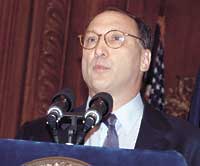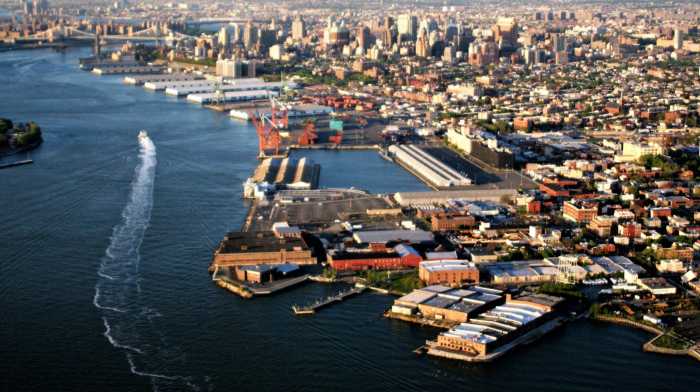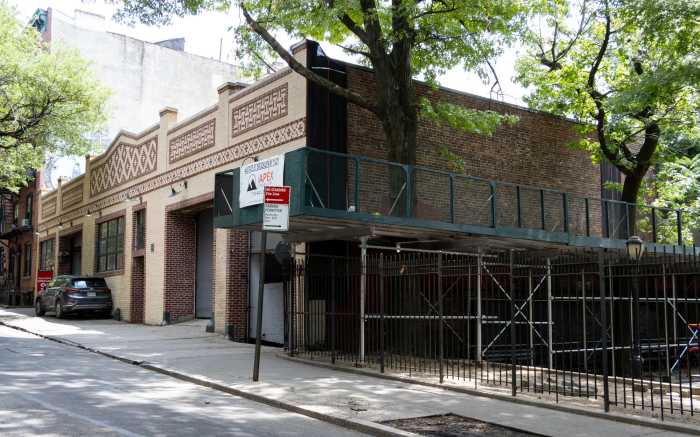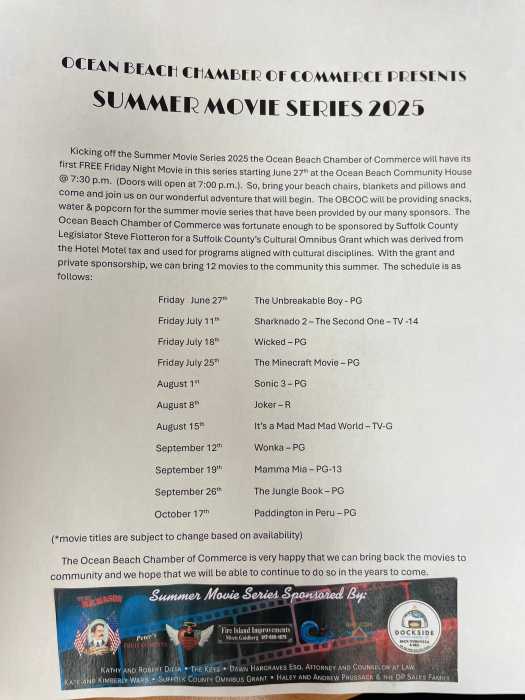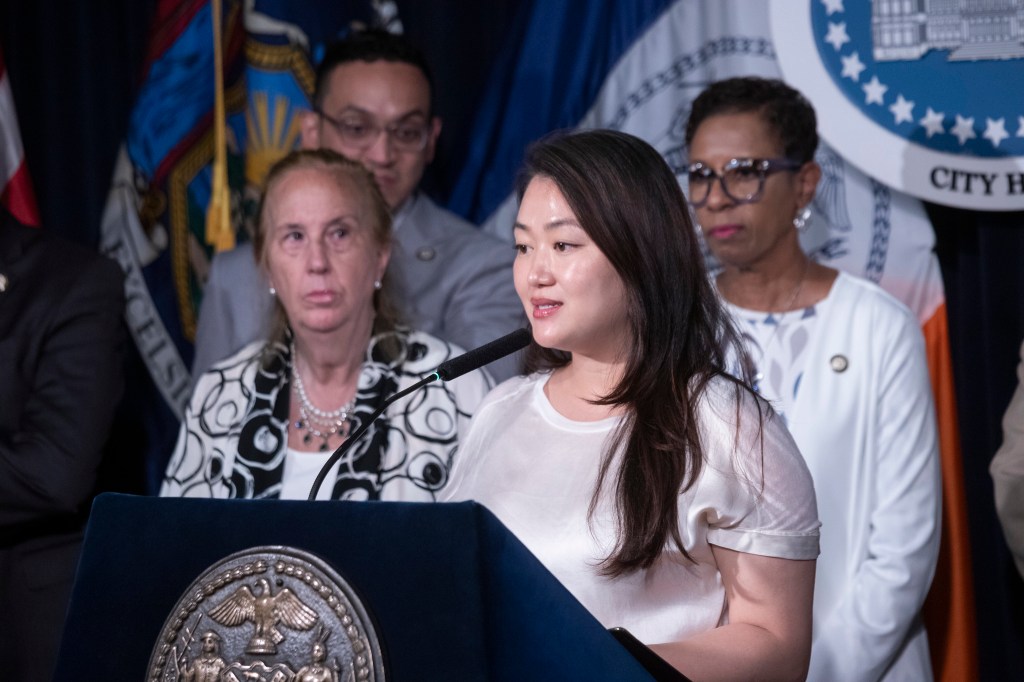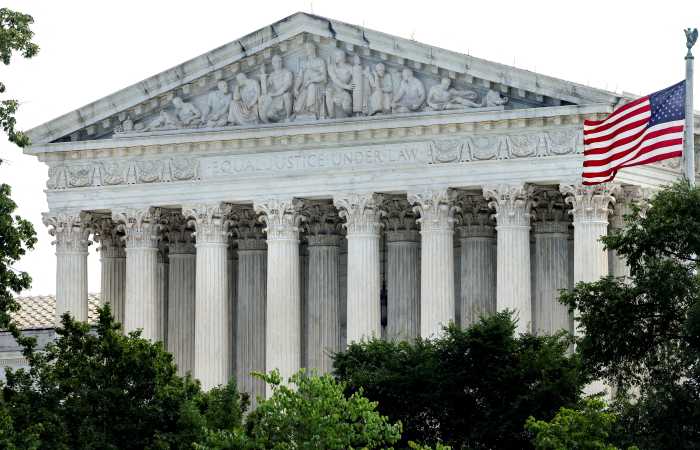State officials threw Atlantic Yards developer Bruce Ratner two lifelines this week in an effort to salvage the bare bones of his original 16-skyscraper office, residential and basketball arena complex.
On Wednesday, the Metropolitan Transportation Authority, citing the effect of the recession on Ratner’s stalled $4-billion project, relieved the developer of his responsibility to make $200 million in infrastructure improvements at the Vanderbilt railyards in Prospect Heights — and gave him the development rights over the yards with just a $20-million down payment instead of the $100 million lump sum he pledged for the full 22-acre site in 2006.
Ratner has until 2031 to pay off the remaining $80 million.
“It’s not quite as good [a deal] as we had hoped,” Gary Dellaverson, said the MTA’s chief financial officer on Monday after presenting the new contract publicly. “Obviously, from every vantage point, it would be better to have $100 million at closing.”
MTA officials said they did not believe that Ratner’s less-extensive renovation of the railyard would affect Long Island Rail Road service — though the MTA originally cited Ratner’s commitment to a full rehab of the train yard as the reason he was given development rights over another bidder who offered $50 million more.
One day before the MTA board vote, the Empire State Development Corporation, also citing the economic downturn, amended its agreement with Ratner to give him more time to build the entire project — and more loopholes to not build.
In the “modified general project plan,” the ESDC admitted that it is only currently moving to acquire the eight-acre site above the railyards at the corner of Atlantic and Flatbush avenues, while the remaining 14 acres are off the table indefinitely.
For now, the ESDC is sticking to the line that the full “Atlantic Yards” project will someday be built.
“The remainder of the site will be acquired when necessary for development,” Steve Matlin, the ESDC’s counsel, told the agency’s board on Tuesday.
The “remainder” includes the vast majority of the 2,250 below-market-rate housing and open space that was part of the project when it was originally approved in December, 2006 — key public benefits that greased the approval process of the highly controversial project.
Under the new plan, Ratner would complete the project by 2019, but the pact is also laced with escape clauses that allow the developer to walk away or postpone what was once supposed to be a 22-acre mega-project in Prospect Heights. The developer need only cite “adverse economic conditions … over an extensive period of time,” according to a memo describing the deal.
Matlin said a new deal was a do-or-die situation.
“Without these changes, the project cannot move forward,” Matlin said.
MTA board members used the same kind of language in their 10–2 vote the next day.
“This is actually [still] a good win,” said Jeff Kay, a board member.
But one of the two “no” votes on the board said the transit agency was not getting the best deal.
“The only issue facing me is whether the MTA is getting a fair market deal for its property,” said board member Mitchell Pally. “I did not believe it four years ago when I voted against it, and I believe the same thing today.”
Local elected officials were also troubled by the vote.
“This is a massive giveaway of our public assets,” said Councilwoman Letitia James (D–Prospect Heights).
“They’ve reduced the [amount of] affordable housing, the open space is off the table, and the capacity of the railyards is smaller. It’s literally a disappearing act.”
Forest City Ratner Vice President Bruce Bender dismissed the notion that the project was being “bailed out” by state officials.
“This is not a bailout,” he told The Brooklyn Paper. “The changes made this week were necessary to advance this project to closing this fall.
“This is an economic stimulus for the borough,” he added. “If we can put a shovel in the ground, that’s a tremendous thing for Brooklyn.”
Ratner must begin work on the arena before the end of the year or risk a large cost increase when new federal tax rules governing the use of bonds for stadium deals go into effect.
Many merchants support the proposed arena because it is expected to generate lots of foot traffic on the 41 nights when the future Brooklyn Nets are playing at home.
“It’s much needed in the evening hours,” said Alan Rosen, the owner of Junior’s restaurant.



